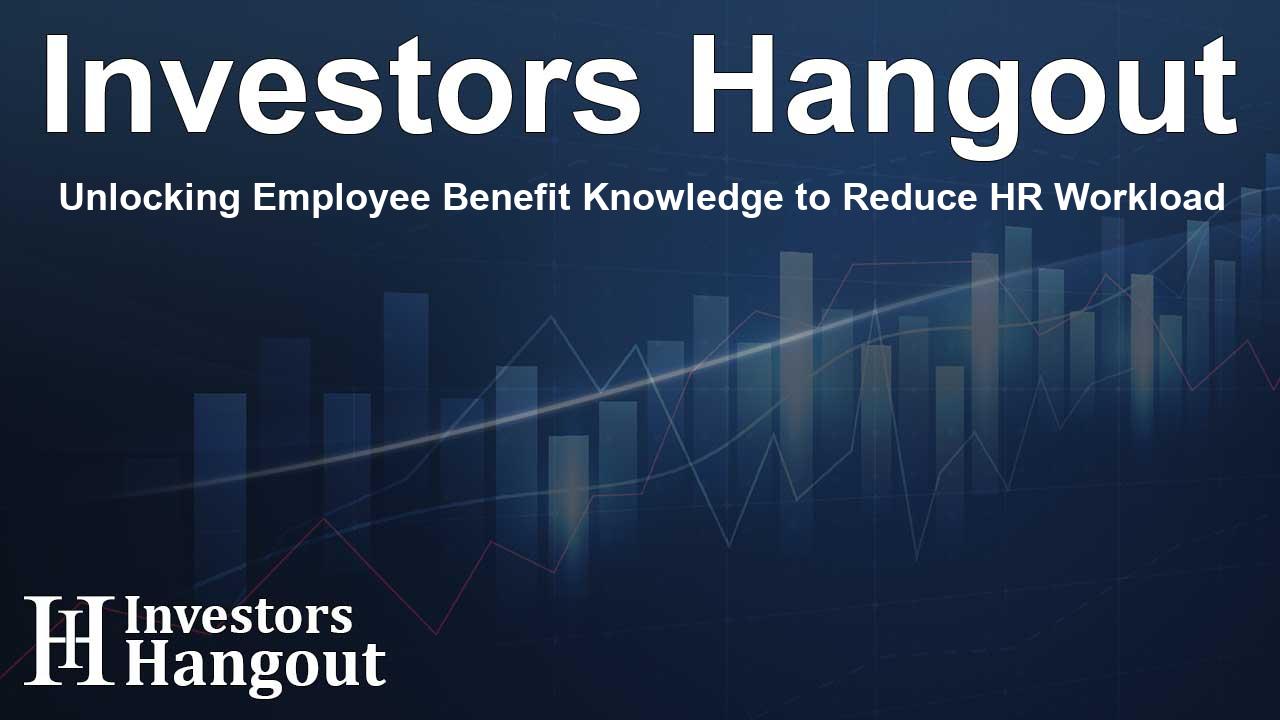Unlocking Employee Benefit Knowledge to Reduce HR Workload

Understanding Employee Benefits and HR Challenges
In today's fast-paced work environment, the relationship between employee education on benefits and HR administrative tasks cannot be overlooked. A recent report sheds light on this critical connection. Companies are increasingly aware that when employees are well-informed about their benefits, engagement rises, alongside overall financial wellness.
Insights from the Latest Research
The findings from Payroll Integrations highlight a significant gap in employee education regarding available company benefits. While human resources departments manage a plethora of responsibilities, a staggering 73% of employees expressed a desire for more information on their benefits. This overwhelming need is hampered by human resources struggling under the weight of administrative tasks.
Payroll Integrations indicates that HR teams dedicate an average of 12 hours each week to payroll and benefits administration. With 27% of HR staff stating they spend over 20 hours each week on administrative duties, the focus needed for strategic initiatives, like educating employees about benefits, is severely limited.
The Role of Generational Differences
One key revelation from the report is the variance in benefit education across generations. Millennials feel relatively sure about their understanding of benefits, with 31% claiming they are fully educated. In contrast, only 24% of Gen Z employees feel the same confidence in their knowledge.
Participation Rates Linked to Education
The connection between feeling educated on benefits and participation rates is striking. Across all types of benefits, employees who feel knowledgeable are more likely to engage with them. For example, educated employees are three times more inclined to opt for Health Savings Accounts and more than five times more likely to participate in lifestyle compensation initiatives.
Interestingly, while Gen Z employees show less overall participation in retirement benefits—only 36% are currently investing in retirement plans—those who do contribute significantly, often investing larger percentages of their income than their older counterparts. This trend reflects the importance of getting timely information out to younger employees.
Technology as a Solution
As Payroll Integrations urges, dependency on outdated manual processes within HR can lead to an increase in errors related to payroll and benefits management. The report reveals that when mistakes happen, it often takes a week or longer to resolve them. A staggering 79% of HR teams recognize that utilizing technology can help prevent these errors, allowing them to redirect their focus to enhancing employee education.
Forging A Path Forward
The report emphasizes not just the need for increased employee education but also the important role that technology will play in accomplishing this goal. By automating routine tasks, HR can invest more time in training and informing employees about their benefits.
With varying degrees of understanding across generations, organizations must tailor their benefits communication strategies to address these differences effectively. Engaging training sessions or utilitarian resources could broaden awareness and participation among all employees.
Conclusion: Empowering Employees Through Knowledge
Ultimately, the findings from Payroll Integrations make it clear: as organizations strive to manage administrative workloads like payroll and benefits, they must prioritize comprehensive education for employees. A knowledgeable workforce not only leads to greater participation in benefits programs but can also enhance financial stability and wellness overall.
Frequently Asked Questions
Why is employee education on benefits important?
Employee education on benefits enhances engagement, promotes participation in available programs, and ultimately contributes to financial well-being.
What are the main administrative burdens facing HR teams?
HR teams often find themselves overwhelmed with payroll processing, benefit administration, and compliance tasks, reducing focus on employee education.
How does generational difference affect benefit understanding?
Different generations exhibit varying levels of understanding regarding benefits, affecting their participation rates and overall engagement.
What role does technology play in alleviating HR burdens?
Technology can streamline administrative processes, reduce errors, and free up HR teams to focus on strategic initiatives, including employee education.
How can employers improve their communication about benefits?
Employers can enhance communication by providing tailored training sessions, utilizing digital resources, and encouraging feedback to empower employees in their understanding of benefits.
About The Author
Contact Owen Jenkins privately here. Or send an email with ATTN: Owen Jenkins as the subject to contact@investorshangout.com.
About Investors Hangout
Investors Hangout is a leading online stock forum for financial discussion and learning, offering a wide range of free tools and resources. It draws in traders of all levels, who exchange market knowledge, investigate trading tactics, and keep an eye on industry developments in real time. Featuring financial articles, stock message boards, quotes, charts, company profiles, and live news updates. Through cooperative learning and a wealth of informational resources, it helps users from novices creating their first portfolios to experts honing their techniques. Join Investors Hangout today: https://investorshangout.com/
The content of this article is based on factual, publicly available information and does not represent legal, financial, or investment advice. Investors Hangout does not offer financial advice, and the author is not a licensed financial advisor. Consult a qualified advisor before making any financial or investment decisions based on this article. This article should not be considered advice to purchase, sell, or hold any securities or other investments. If any of the material provided here is inaccurate, please contact us for corrections.
